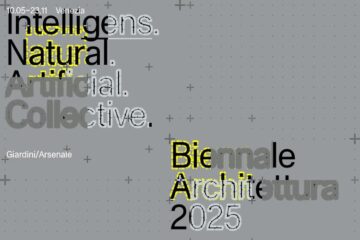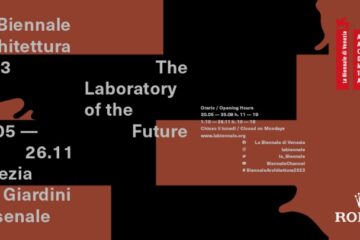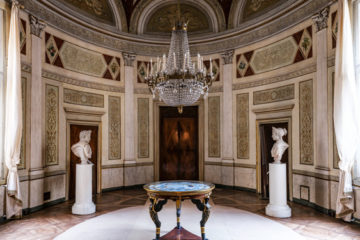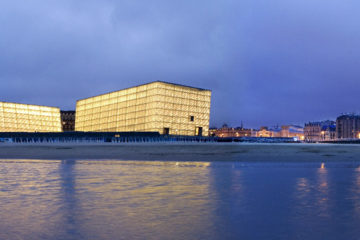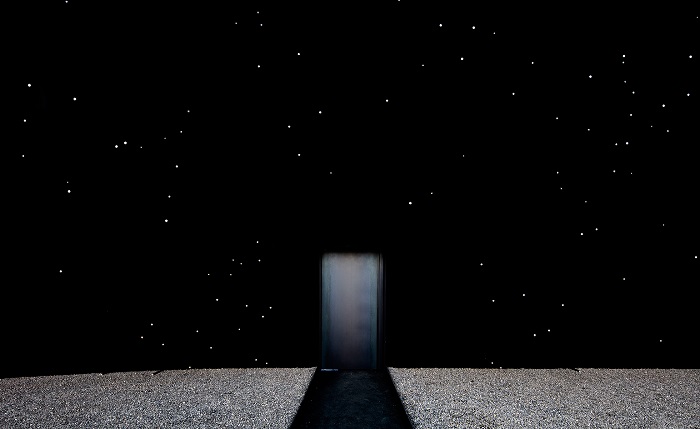
The darkest building on earth, the Hyundai Pavilion by architect Asif Khan was officially unveiled during the 2018 Pyeongchang Winter Olympic Games in South Korea. The Hyundai Pavilion presents Hyundai’s fuel cell technology through three unique experiences: the universe, water and hydrogen.
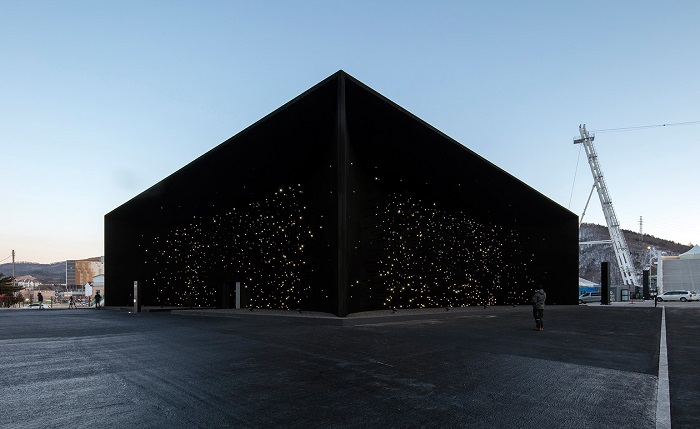
The pavilion’s ten-metre-high exterior walls are coated with Vantablack VBx2 that absorbs 99% of light. From afar it appears just as a surface of blackness. But as you approach, thousands of illuminated stars create a three dimensional illusion of space.
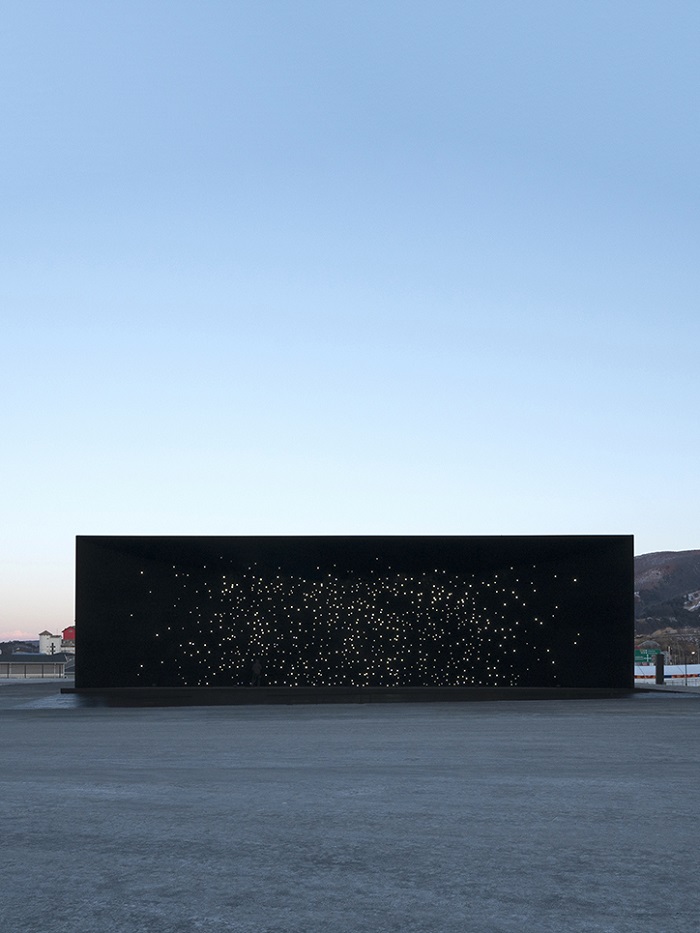
Within the 35 × 35 metre pavilion, visitors experience a vast white space where 25,000 water droplets mesmerizingly collide and split, forming a central lake which then dematerializes. The third space, Hydrogen, showcases how this abundant element powers the vehicle, building a more sustainable future for all.
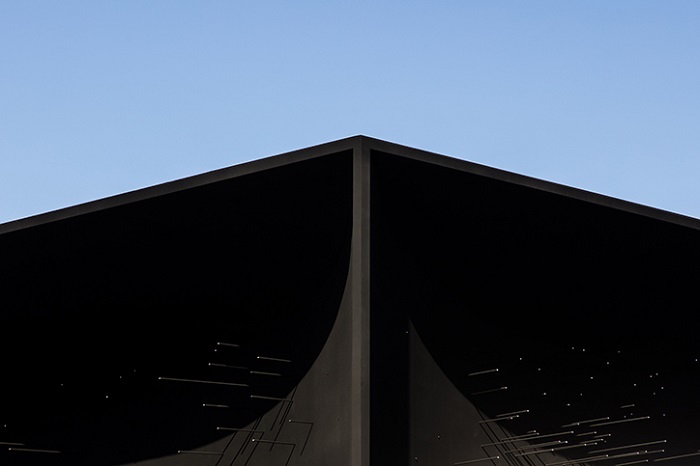
“From a distance the structure has the appearance of a window looking into the depths of outer space”, Asif Khan said in a statement. “As you approach it, this impression grows to fill your entire field of view. So on entering the building, it feels as though you are being absorbed into a cloud of blackness.”
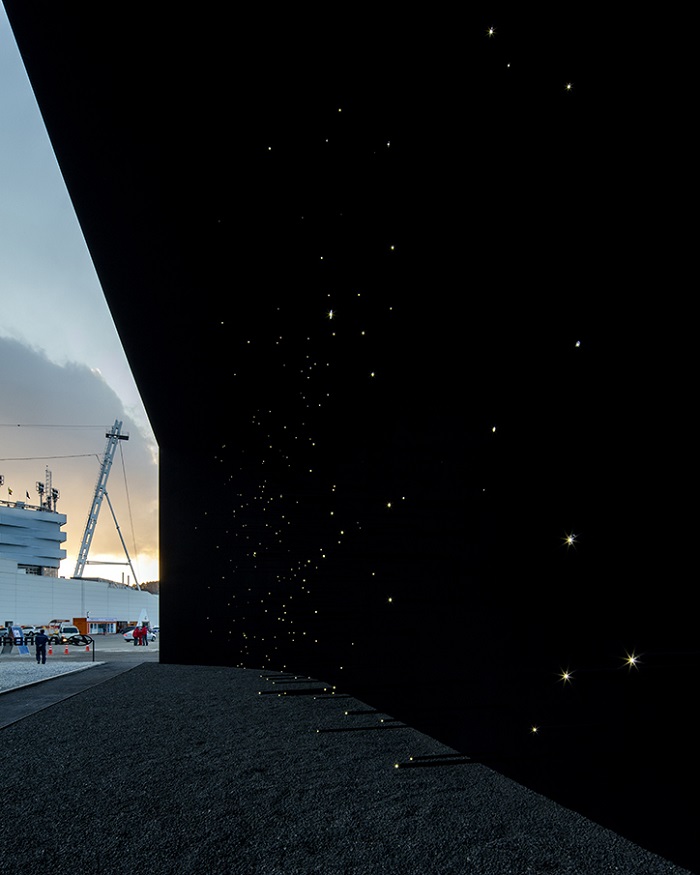
“The water installation visitors discover inside is brightly lit in white. As your eyes adjust, you feel for a moment that the tiny water drops are at the scale of the stars. A water droplet is a size every visitor is familiar with. In the project I wanted to move from the scale of the cosmos to the scale of water droplets in a few steps. The droplets contain the same hydrogen from the beginning of the universe as the stars.”
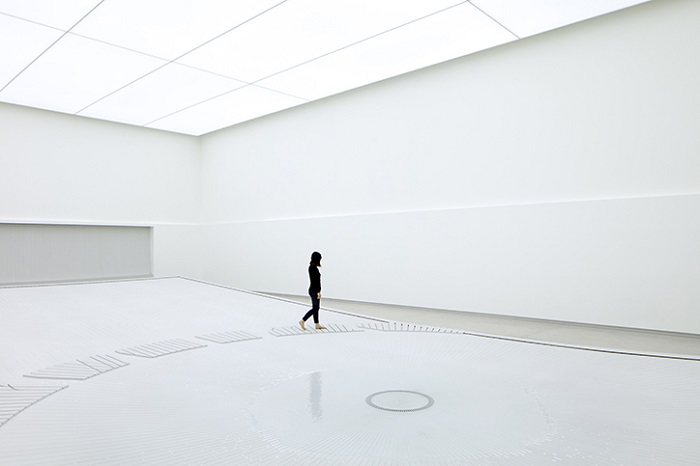
Images courtesy of Luke Hayes
Discover: www.asif-khan.com | www.creativeworks.kr/hyundaipavilion
